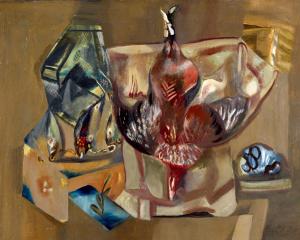
It would appear on the surface that New Zealand’s culinary history is somewhat devoid of innovation and inspiration, neatly represented by the stalwart stodginess of the mutton pie (a delectable regional specialty). However, the acceptance of this supposed bland continuity of cooking does a great disservice to the central role of food in our society.

With a century of electrical distribution dawning over Waitaki this year, the town was abuzz with the opportunity to celebrate the manifest technological advancements that propelled us from candlelit drudgery to modernity. It would have been easy to be sucked up into the fascinating engineering feats achieved in pursuit of this, but electricity flows into all of our homes and lives, with a particular effect on the way we eat.

Despite the overtly chauvinistic tone that is characteristic of the period, in doing so the power board ventured into the world of domestic cookery. Over the years the power board showroom would play host to all sorts of events and activities from electric stove operation to microwave cooking classes. One of these, "Bak-A-Rama", was the talk of the town. Contestants were lined up in front of sparkling Shacklock stoves in a local hall, and set against each other in a ruthless battle of the jam roll. Not only were they judged on the consistency and form of said rolls by a panel of stern-faced representatives from Shacklock, but they were judged on their deportment. Pristine, starched aprons could not be besmirched with flour or sullied with butter.
You can look through many lenses at events in history, and there is certainly no getting away from the connotations of live competitive domesticity. However, the memories that this story elicited in our community spoke more to the pride and passion that existed within the cohort of homemakers. Competitors owned their skill and hidden knowledge and took pride in their ability to perform such tasks while dodging gobbets of jam. Within its own ranks, this was a supportive and proud demonstration of skill even if rife with some rather bitter comments about the proper number of swirls in a jam roll.
by Henry Buckenham, curator at Te Whare Taoka o Waitaki/The Waitaki Museum and Archive







![‘‘Neil’s Dandelion Coffee’’. [1910s-1930s?]. EPH-0179-HD-A/167, EPHEMERA COLLECTION, HOCKEN...](https://www.odt.co.nz/sites/default/files/styles/odt_landscape_small_related_stories/public/slideshow/node-3436487/2025/09/neils_dandelion_coffee.jpg?itok=fL42xLQ3)



